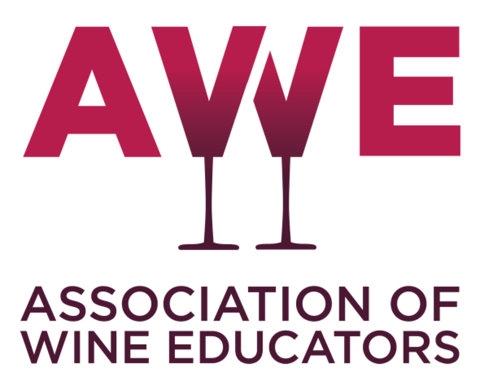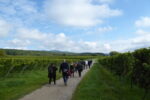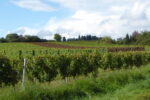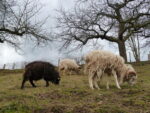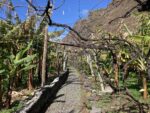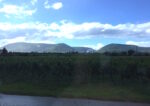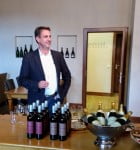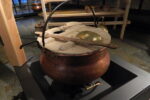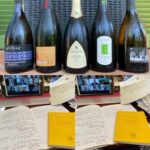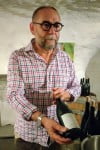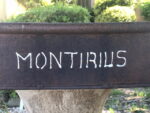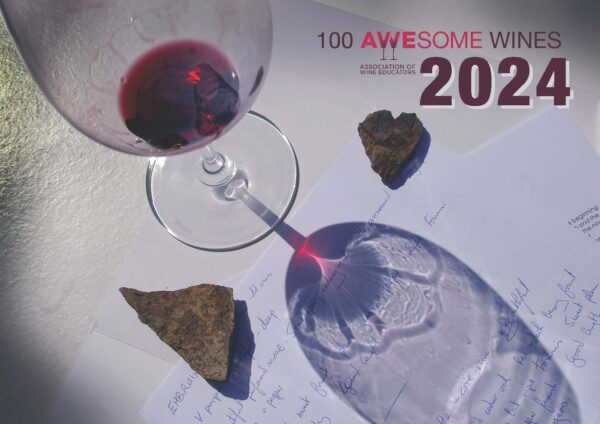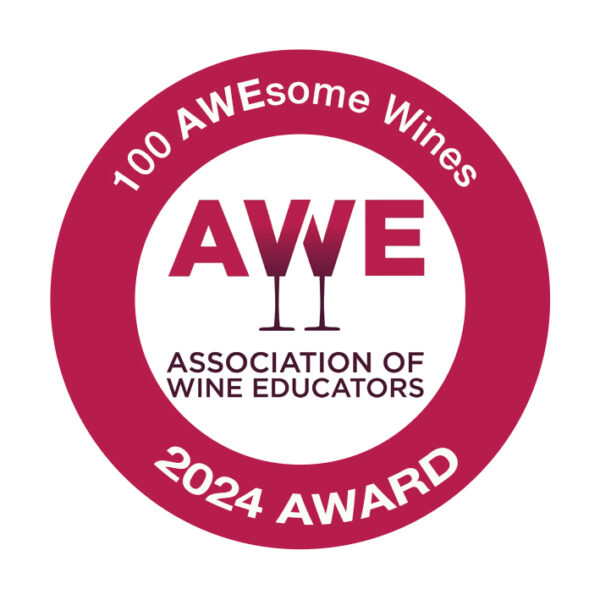The final day of the trip was one of contrasts and surprises! The day started at Schloss Johannisberg with a glass of the prestigious Riesling and a privileged visit to their cellars – both the impressive ‘new’ (1724) cellars and the old cellars used by the Benedictine monks. After viewing the vineyards and the Rhine from the terrace we set off to walk to Schloss Vollrads which was a very welcome interlude of fresh air and exercise after a fairly intensive 3 days of lectures and tastings (Figure 1).
En route was the first surprise – rows of red leafed vines in among the Spätburgunder and Riesling vines (Figure 2). Our guide explained that this was the unusual Dakapo grape – a teinturier grape unknown to most of us. It can be used to add colour to the Pinot Noirs.
We were unable to enter the Schloss Vollrads, as it is now a function venue owned by a local bank after 27 generation in the Matuschka Greiffenclau family, but enjoyed a glass of its impressive Riesling in the sunshine. After a hearty lunch in Allendorf’s family restaurant we were given a rather full glass of their wine and asked to enter a white cube shaped room.
Once we had lined up against the walls we were invited to taste the wine. The room was then bathed in a rosy light and when we tasted the wine again it had pronounced flavours of ripe red fruit. The light changed to green and now the wine’s acidity became the most noticeable feature. When the light became blue amazingly (to me) the wine tasted watery. Finally a sunny yellow-orange light returned the wine to perfect harmony and balance. Most of us had never had this experience before and, as Heather pointed out, this may explain why wine tasted in the sun on holiday is so delicious and so disappointing when transported home.
Allendorf also employ some rather unusual ‘French guest workers’ in the form of Breton pygmy sheep, which are only about 18 inches high at the shoulder, to graze the vineyard cover crops and eat the lower vine leaves (Figure 3).
The final winery visit to Bernard Mehrlein was a complete contrast to most we had visited in that it produces wine for the mass market. I think we were all surprised by the quality of the first wine, which retails at only 6 euros, but was crisp with refreshing lime overtones – a far cry from the usual perception of inexpensive German wine. In the vineyards we saw the damage a hail storm had done to the fruit but our host was unperturbed as the modern picking machines can detect and blow away any damaged grapes.
In our final day we saw the two ends of the spectrum of wine quality and were disappointed with neither. As the previous reports show, Wines of Germany had laid on a wide-ranging tour and if you get a chance to go on one in the future my advice is to say ‘Yes please’ very quickly!
